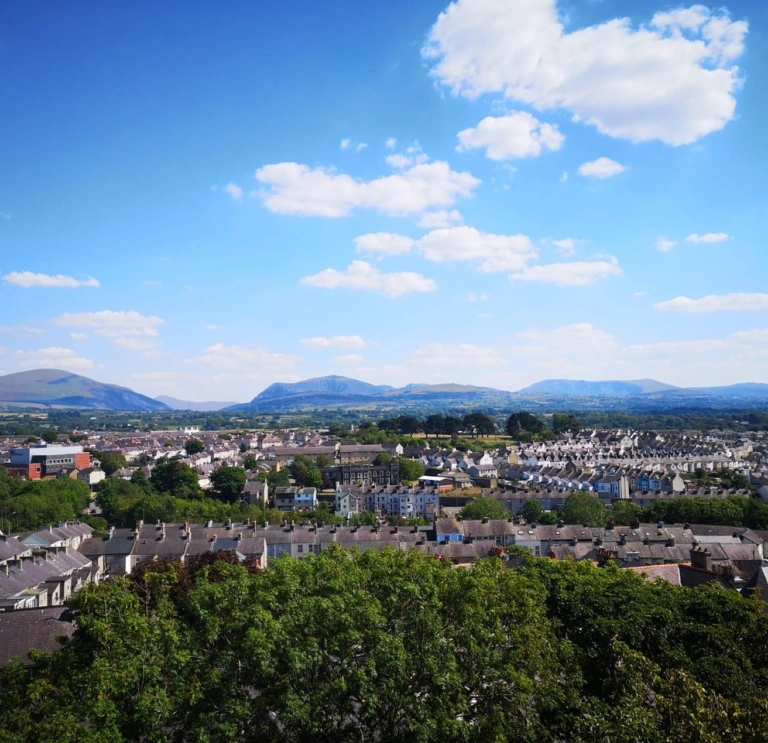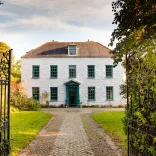Some places have a fourth dimension, don’t you think? A magical quality imperceptible to the human eye. An inexplicable charm. I often feel like this about particular locations. This might arise from personal memories. From being with someone special. From the name of a place even.
But literary connections can also evoke such a response. Some corners of Wales immediately remind one of a story or a poem. Something someone wrote at some point in time has given these places a special kind of atmosphere, creating another dimension.
So here are ten places I find captivating – on a circular tour. Our journey begins at ‘the far end of the earth’ in Llŷn...
Aberdaron
In days of old, this neat little village was the last stop on the pilgrimage to Ynys Enlli (Bardsey Island). You can still take a day trip by boat to the island from Porth Meudwy, the tiny harbour beyond the headland. And modern-day pilgrims still arrive to savour the unique Welsh atmosphere of the two pubs on the square, or the church where poet R.S. Thomas was once a vicar.
But the tide bubbling in the bay carries the words of another poet, Cynan. He dreamt of buying an isolated cottage here, with nothing at its door except the rocks of Aberdaron and the wild waves of the sea. His poem, heavy with the dreamlike quality of Llŷn, fills one’s thoughts at each visit. Isn’t it strange how one is most drawn to the most distant parts?
Search for things to do and places to stay in Aberdaron.
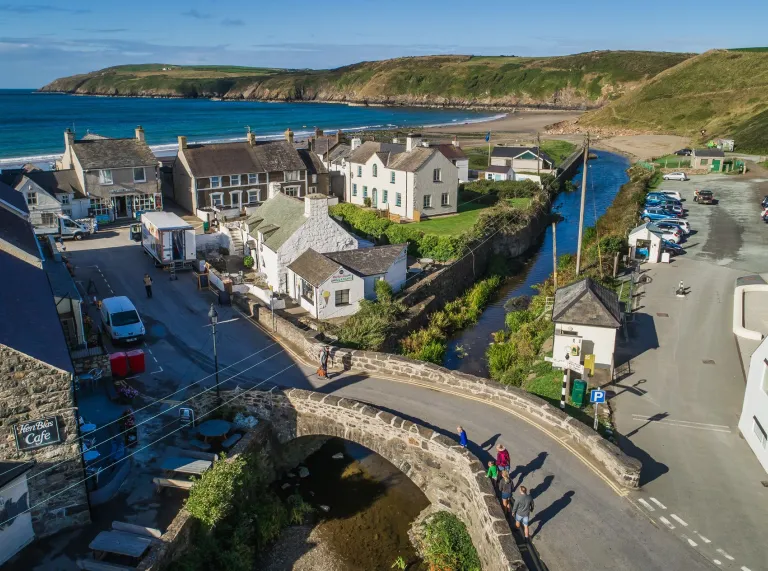
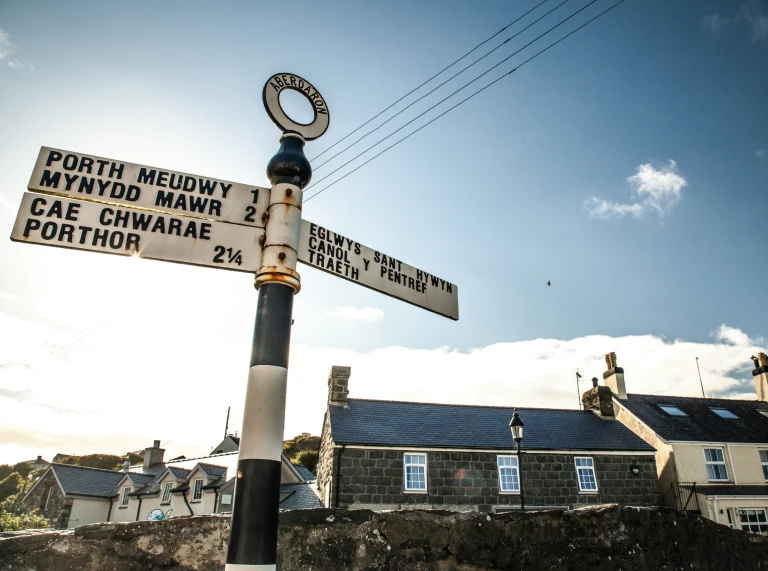
Harlech
Let us trace the southern path along Llŷn towards Harlech. Yes, there’s the stunning castle jutting from the cliff, complemented by the golden dunes of Ardudwy. Yes, the town itself is so charming with its steep winding roads. And yes, I recall Sunday afternoons full of ice cream and sand and long journeys in the back of a hot car. But that’s far from the whole story. Many centuries ago, before Edward I even thought of building his audacious fort on the rock, a far greater king reigned here. At the beginning of the second branch of the Mabinogi, this is where the giant, Bendigeidfran fab Llŷr, sat on a stone beside his court. And I can see him now, peering out at Matholwch’s ships as they approach from Ireland...
Explore Harlech's history for yourself along one of the many trails in and around the town.
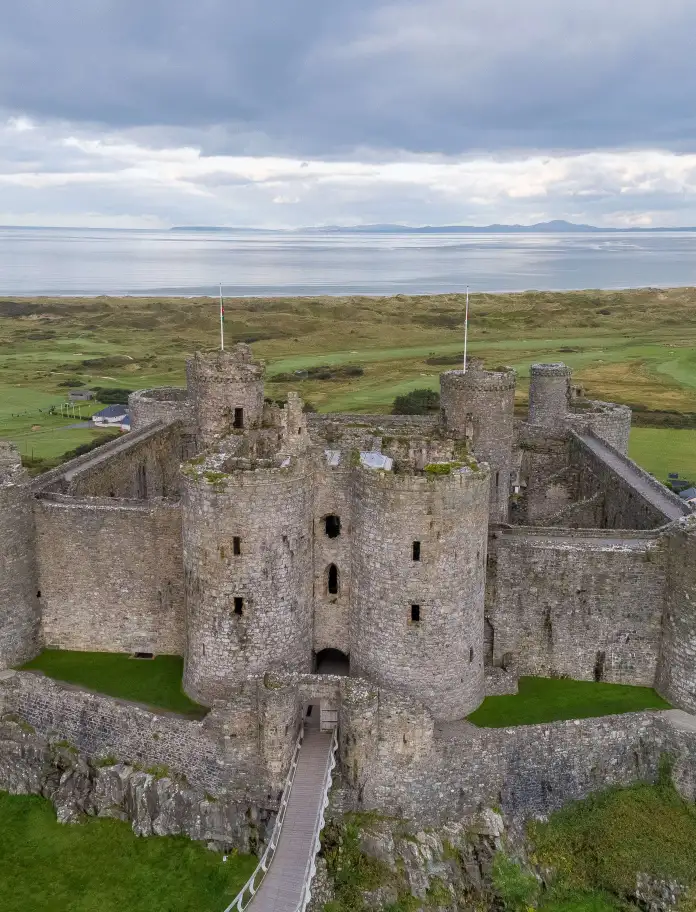
Ystrad Fflur (Strata Florida)
From Harlech, our journey takes us deeper inland to Mid Wales. A stone’s throw from Pontrhydfendigaid stand the splendid remains of an abbey, Strata Florida. More than a thousand years old, this was once a religious and cultural hub of great importance. Llywelyn Fawr (Llywelyn the Great) spent time here as did Gerallt Gymro (Giraldus Cambrensis).
But I’m more interested in another story. Tradition has it that under that yew tree over there, Dafydd ap Gwilym rests in peace. He is considered the best Welsh poet of all time, and one of the greatest in Europe in the middle ages. There is something in the air here and you must visit to experience it.
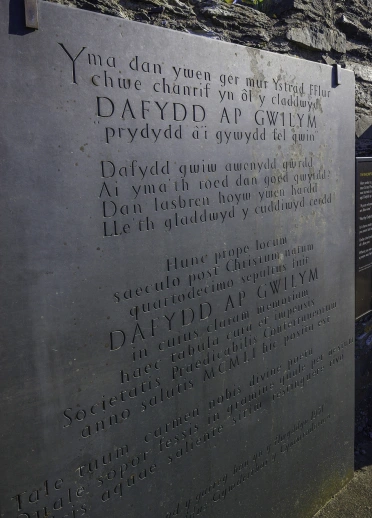
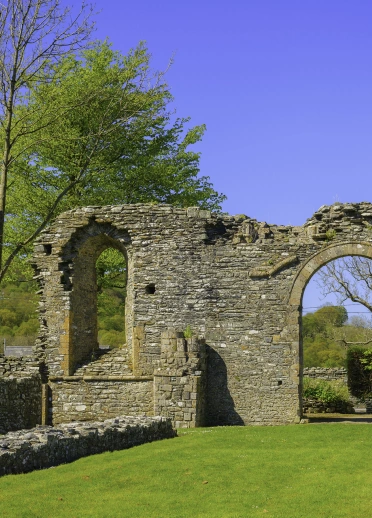
Cwmtydu
We now head south west to the coast. Between Ceinewydd (New Quay) and Llangrannog, we steer down the narrow roads towards Cwmtydu. There is little to be seen here today, apart from a cafe and a shop, a couple of holiday homes and an old lime kiln near the beach.
But just look at those rocks. Take in the little caves and the dark coves. Long before I visited this place for the first time, I had already been here – under my duvet as a lad. We are back in the eighteenth century, and I am in the company of Siôn Cwilt and his daring band of smugglers. My guide is the children’s author, T. Llew Jones. The sand reeks of rum; the waves warn of turmoil. As night closes in, I stare towards the horizon, seeking out a ship’s sails.
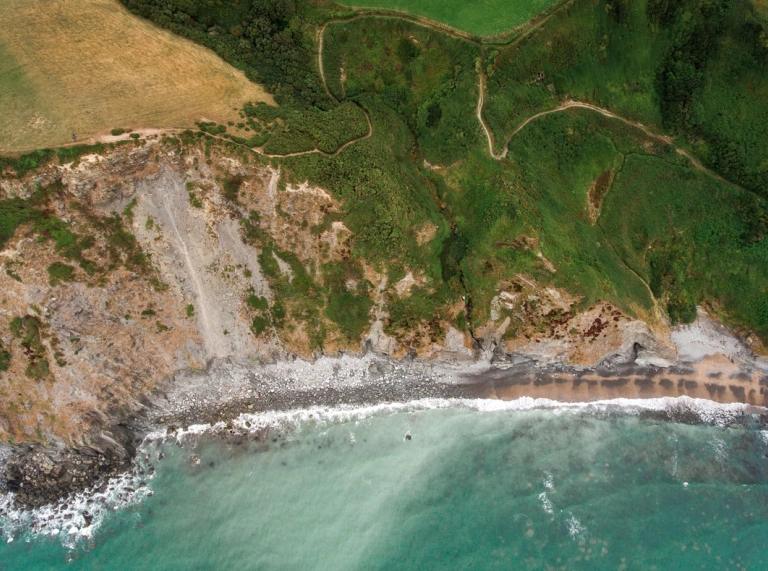
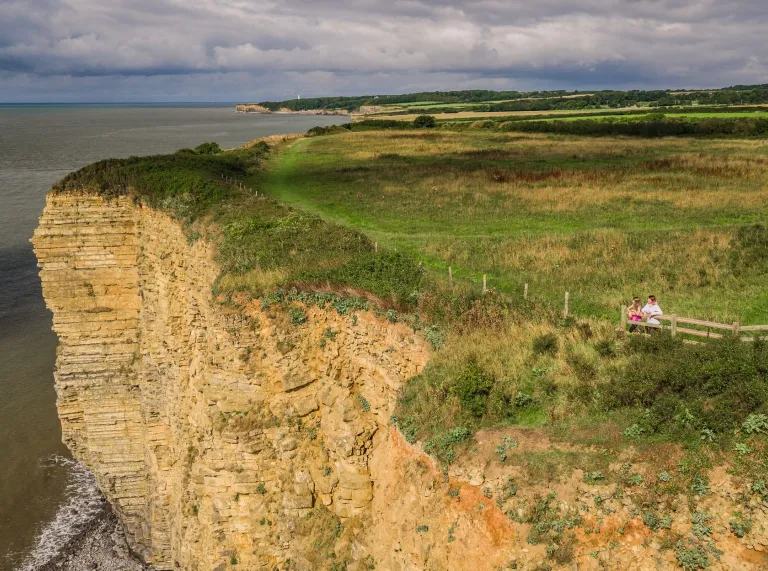
The Preseli Mountains
The voice of the far west calls. We have already mentioned the Mabinogi, and we should take care not to get trapped in the mists that tend to engulf this region. The third branch of the Mabinogi describes the spell cast over Dyfed – a haze that makes people disappear. But even without the mist, the light is different here.
This is the light poet Waldo Williams conveys in his work written in the middle of the last century. Amongst these ancient hills he witnessed the bond between people and nature, and between fellow human beings. Waldo knew the meaning of life. He knew that we belong to this land; we belong to each other. The memorial stone to the Waldo stands on the common near Mynachlog-ddu to remind us of this lasting truth.
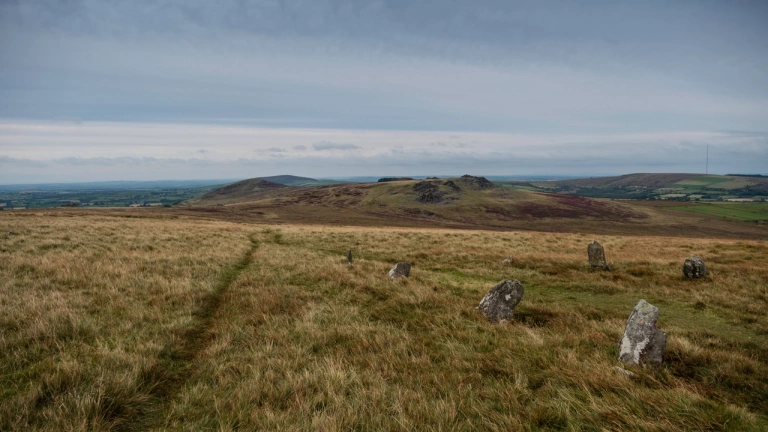
Merthyr Tudful
Cross country now to Merthyr Tudful. But the town in my mind’s eye is not the Merthyr that stands here today.
I see a town where smoke and fire fill the air. Blast furnaces spew out their innards. Airships fly above us. Beneath us lies an uneasy underworld where living conditions for workers are atrocious. Chapels cast heavy shadows along streets, and filth and social injustice are rife.
This is the world so memorably portrayed in Ifan Morgan Jones’ novel, Babel – the winner of the 2020 Welsh Book of the Year Prize. Merthyr is not named in the volume and the town portrayed is fictional. Fictional maybe, but not that far from the truth either. The suffering and sweat of the industrial age formed the ensuing reality of Cymru.

Cilmeri
From Merthyr, a climb over the Bannau Brycheiniog (Brecon Beacons) awaits us. We arrive at Llanfair-ym-Muallt (Builth Wells), before taking a backroad to Cilmeri. It will most probably be pretty quiet; a ripple on the Irfon river, a few bleats from local farms, little else.
But then, chilling words come to mind of ‘terror on a nearby twig’ and an ‘icy wind lacing along the bridge’. Here, in 1282, Llywelyn ap Gruffudd, our Last Prince, betrayed and tricked, met his end at the hand of the English. The poets of the age sang mourningly of the atrocity. But here today at Llywelyn’s memorial, it is Gerallt Lloyd Owen’s inspired ode, written seven hundred years after the event, that projects a reel of living, frightening images.
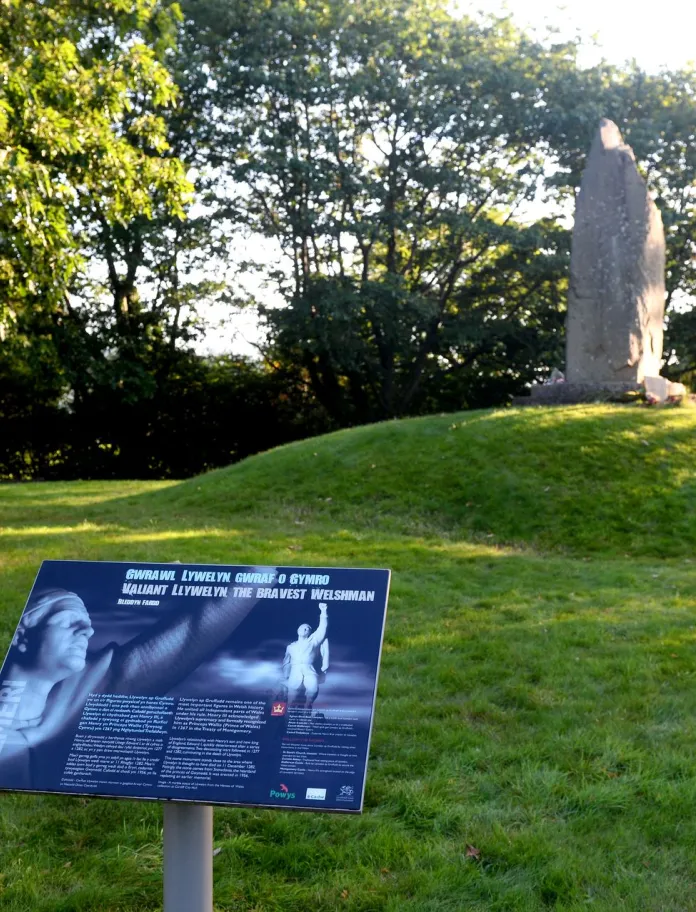
Sycharth
We remain in the heroic world of the middle ages, but now trace Offa’s Dyke northwards. Sycharth today is a remote spot where there is little to be seen beyond a notable grassy hillock. But it has such significance. This, after all, is where Owain Glyndŵr’s court stood in the fourteenth century.
What is so special about it? Well, we do not have to rely on our imagination to bring this place to life. We have a surviving manuscript of a poem by the poet, Iolo Goch, which describes the scene in minute detail. This poem revives the splendour of the symmetrical construction, its gateway and its drawbridge over the moat, its fine roofs, its deer park and its lakes. We witness the warmest and most generous hospitality and feasts of copious food and drink. These words, penned six hundred years ago, offer us a direct route to the past.
Bethesda
We now find ourselves deep under the peaks of Eryri (Snowdonia). The mountains of the Carneddau and Glyderau are behind us and we are on Bethesda high street, a section of the famous A5. Bethesda is a cornerstone of the contemporary Welsh rock scene, where the Penrhyn slate quarry still casts its enormous shadows.
But this place has another slant. Through each door and window we catch a glimpse of the melancholic humour of Un Nos Ola Leuad, Caradog Prichard’s iconic novel. Walking along this street, I recall the tragic wanderings of the main character. On the one hand, insanity and poverty; on the other, the humour and innocence of childhood. The heart-warming relationship between the boy and his mother is ever present. Life in all its bittersweet complexity can be found here on this little patch of road.
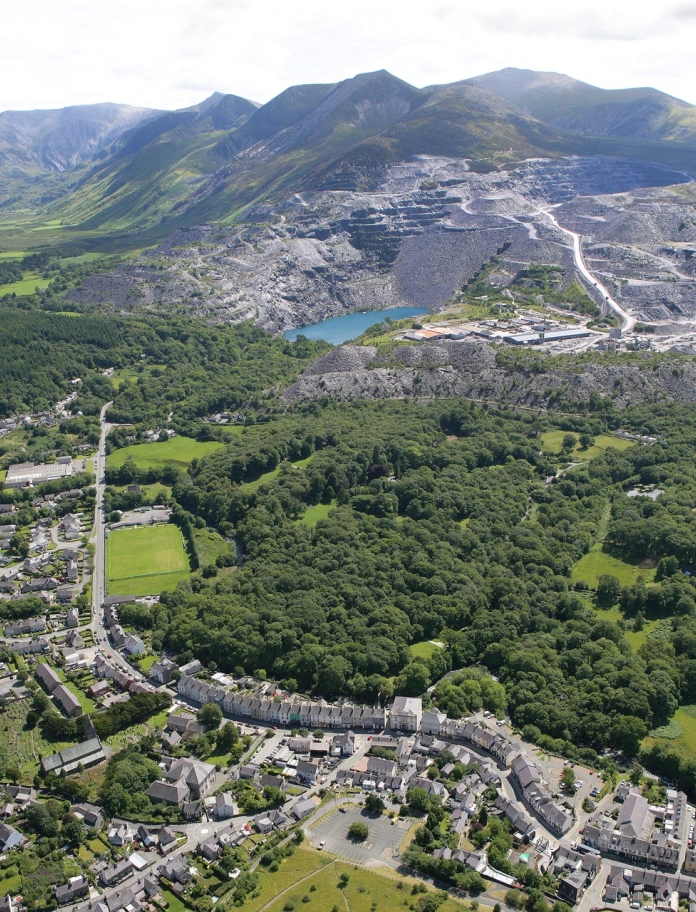
Twthill, Caernarfon
The only place to end this journey is of course in my home town and where better to view it in its entirety than from the top of the only ‘mountain’ in Caernarfon. I could easily imagine Glyndŵr’s forces attacking on this rocky outcrop as they did in the battle of Twthill in 1401. Or I could go back further and join Macsen Wledig, (Magnus Maximus, the Roman Emperor) as he casts his eyes over the fort below.
But today, keeping me company are Jamal Gwyn Jones, Med Medra, Angharad Bugbird, Babs Inc and Alun Stalin. These are the fictional characters in Angharad Price’s novel, Caersaint. Fictional they may be, but to me, they’re flesh and blood – real people in this real town. I bet one or two of them will be leaning on the bar in the Twthill pub now, just the place to end our journey with a jar. There to welcome us will be Chunk, the landlord, another legend in his own right.

